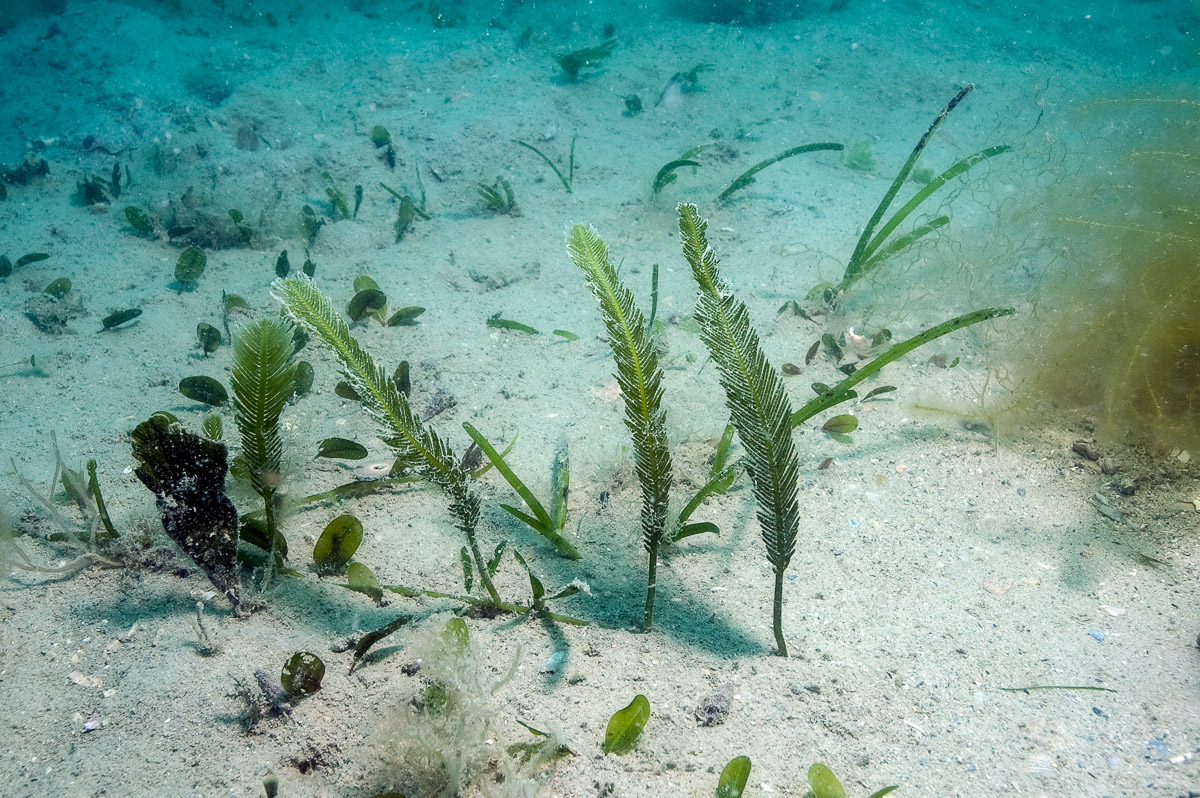A lot of the Great Barrier Reef region is not reef habitat. There are seagrass meadows, mangrove forests and a large area of sand or silt habitat. On several recent projects we have done some diving exploration of shallow sand and silt bottoms and we are always amazed at the variety of interesting animals and plants that live in these habitats. Feather stars sit on the sand bottom or cling to stones or dead shells, holothurians (beche de mer) suck up the rich sediment to digest the organic content, sea shells search for prey and a variety of sea pens, anemones and soft corals filter plankton from the passing water. There are even small free-living hard corals that are specialised soft bottom dwellers. Two very similar hard corals have adapted to sand living by teaming up with a sipunculid worm. The worm lives in a tunnel in the coral base and can move the tiny coral around when needed, even turning it over so it won’t get smothered if the coral gets turned upside down. Many sedentary animals have special bases that can bury in the sand to hold themselves up into the current so they can filter planktonic food from the passing water. Seagrasses and algae can send down roots or tendrils into the sand to maintain position in the shifting sands. A number of fish species are soft bottom specialists, either burrowing in the bottom like shrimp gobies, or lying camouflaged on the sand surface.
I’ve attached a gallery of typical soft bottom dwellers photographed during recent expeditions.
































